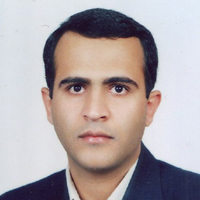A comparative analysis of environmental differences in the level of cultural development indicators
Nowadays, development is considered a fundamental change in economic, social and cultural variables in any society and its realization requires coordination between its dimensions. In other words, real development is a comprehensive development and cultural development is an integral part of it. Hence, no development is possible without cultural development and economic development is incomplete without cultural development. It should be noted that the main goal of development, including cultural development, is to eliminate inequalities. Therefore, the existence of inequality and spatial imbalance is one of the obstacles to the development of various facilities and infrastructure in a balanced way leads to the achievement of integrated development. In order to achieve a fair distribution of cultural facilities, it is necessary to identify different settlements in terms of the extent to which they have cultural facilities and services; In this regard, deprived and developed areas are identified and planners can take action to balance and reduce the distances between the areas. Hence, the study was conducted to measure regional differences in the level of cultural development indicators of the provinces to provide a clear picture of cultural facilities and services in the provinces to guide the budget to improve the cultural development of the country.
The research method was based on the construction of a composite indicator, the linear norm method was used to free scale, the principal component analysis method to weigh the indicators, the TOPSIS method to construct a composite indicator of provincial development, coefficients of variation and Williamson to calculate inequality, and finally GIS software as well as hierarchical cluster analysis method to classify the level of development of the provinces were applied. In this regard, 19 indicators were selected and their data were obtained from the results of the general census of population and housing in 2018 and the results of statistical yearbooks in 2018.
The results of the research indicated the indicators including "ratio of the number of book titles published to the whole country", "number of visitors to museums under the Cultural Heritage, Handicrafts and Tourism Organization to the whole country" and "ratio of the number of active publishers to the whole country" and "number of cinema spectators per 100,000 population" had the highest inequality in the country, respectively. In contrast, the indicators including "share of the population covered by the TV channels of the total population of the province", "ratio of books in the Institute for the Intellectual Development of Children and Young Adults to the number of its members" and "per capita libraries per 100,000 population" and had the least inequality and the state of the provinces were balanced in these indicators. In addition, the provinces of Tehran, Mazandaran, Khorasan Razavi, Isfahan, and Boushehr were in the best situation and Lorestan, Kurdistan, Sistan and Baluchestan, West Azerbaijan and Golestan, respectively, had the lowest rank in terms of the composite indicator. The findings of leveling the provinces indicated that the provinces of Tehran and Mazandaran were at a very high level of development. Most of the central, northeastern and southwestern provinces were identified at the level of high development. At the level of average development, provinces including North Khorasan, some southern (e.g., Kerman, Hormozgan), central (e.g., Qom, Chaharmahal and Bakhtiari), western (e.g., Lorestan, Kermanshah), northern and northwestern (e.g., Alborz, Qazvin, Zanjan, East Azerbaijan, Ardabil, Gilan) provinces were observed. Finally, five provinces of Golestan, Sistan and Baluchestan, Hamedan, Kurdistan, and West Azerbaijan were observed at a low level of development. The result of hierarchical cluster analysis to classify the level of cultural development of the provinces showed that two main clusters were formed, the first cluster (cluster 1-1) included only the provinces of Tehran and Mazandaran, which indicates that the distance between their cultural development and the rest is greater. In the other cluster (clusters 1-2), other provinces were located.
The findings showed that there was high inequality in the indicators related to book publishing and the number of visitors to museums which are mostly focused in Tehran. Thus, it is necessary to take those indicators in other provinces into consideration. Furthermore, the results revealed that the provinces of Tehran, Mazandaran, Khorasan Razavi, Isfahan, and Boushehr were in the best situation and the provinces of Lorestan, Kurdistan, Sistan and Baluchestan, West Azerbaijan and Golestan, respectively, have the lowest rank. The findings of leveling provinces as well as cluster analysis confirmed the significant difference in the level of cultural development among provinces. Therefore, improving the cultural development of provinces with low-level development should be taken more into account.
- حق عضویت دریافتی صرف حمایت از نشریات عضو و نگهداری، تکمیل و توسعه مگیران میشود.
- پرداخت حق اشتراک و دانلود مقالات اجازه بازنشر آن در سایر رسانههای چاپی و دیجیتال را به کاربر نمیدهد.


